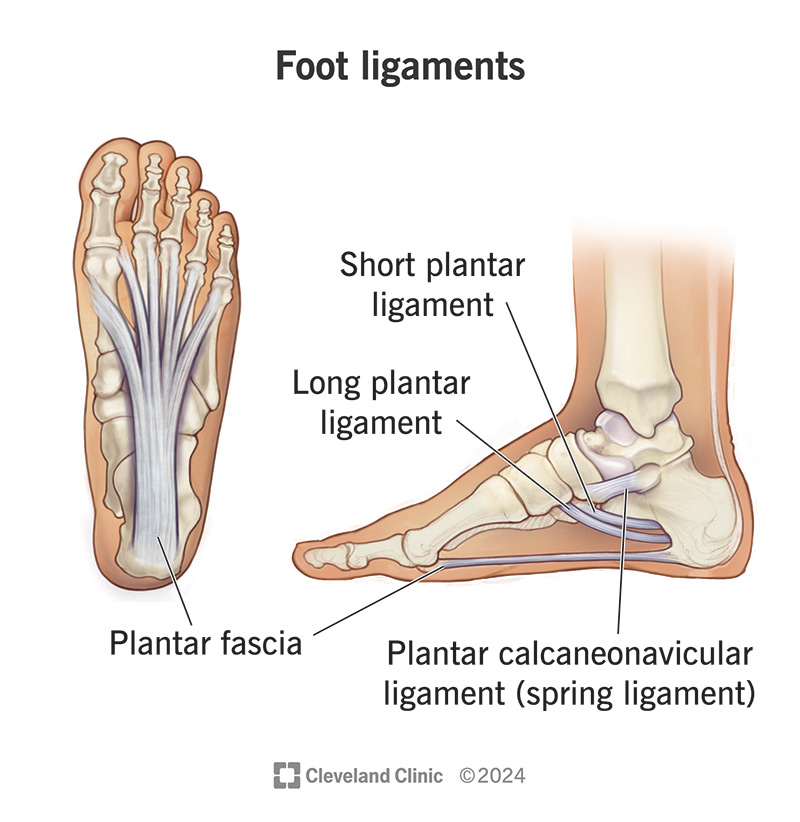Your feet are complex and hardworking body parts. Along with 26 bones and 30 joints, your feet contain dozens of ligaments. These strong bands of connective tissue have several important functions. An injury to a ligament of the foot can cause pain and inflammation. See your healthcare provider if you experience a foot ligament injury.
Advertisement
Cleveland Clinic is a non-profit academic medical center. Advertising on our site helps support our mission. We do not endorse non-Cleveland Clinic products or services. Policy

Foot ligaments are strong bands of tissue that connect various bones in your feet. These ligaments help stabilize your feet and provide necessary support to the arches in your feet. The ligaments of your feet:
Advertisement
Cleveland Clinic is a non-profit academic medical center. Advertising on our site helps support our mission. We do not endorse non-Cleveland Clinic products or services. Policy
You probably won’t think about the ligaments in your feet until you experience an injury. Inflammation or tears in any of your foot ligaments can cause foot pain. But thankfully, most foot ligament injuries heal with rest and nonsurgical treatments.
Because there are so many bones in your foot, there are also numerous ligaments connecting them. Some of the main ligaments in the foot include:
The primary purpose of the foot ligaments is to stabilize and support the arch of your foot. The arch is formed by bones, ligaments and tendons. The arch gives shape and structure to your foot.
Foot ligaments also help support your body’s weight. They absorb the impact your body feels with every step, like how shock absorbers in a car absorb bumps in the road.
Advertisement
Foot ligaments run throughout your foot. Ligaments connect all 26 bones in each foot. Different foot ligaments:
Foot ligaments are made of fibrous connective tissue. These thick bands of soft tissue contain high amounts of a protein called collagen and strong yet stretchy elastic fibers.
Just like other ligaments in your body, foot ligaments can stretch, strain or even tear. Sports that involve quick twisting motions — like basketball, soccer, football or dancing — increase the risk of foot ligament injuries. Conditions that may affect your foot ligaments include:
To prevent foot ligament injuries, it’s important to strengthen the muscles that support and stabilize your ankle. Foot ligament strains often happen when you roll or twist an unstable, weak ankle.
Other prevention measures include:
You should call your provider (podiatrist) if you experience:
Your feet contain dozens of ligaments. These tough bands of tissue connect the many bones of your feet. They also stabilize your feet and provide support for your arches. If you experience pain in your foot or aren’t able to put any weight on it, see a healthcare provider. There may be something going on with the ligaments in your feet. Your provider can help diagnose your issue and provide treatment options.
Advertisement
From sudden injuries to chronic conditions, Cleveland Clinic’s orthopaedic providers can guide you through testing, treatment and beyond.

Last reviewed on 12/06/2024.
Learn more about the Health Library and our editorial process.